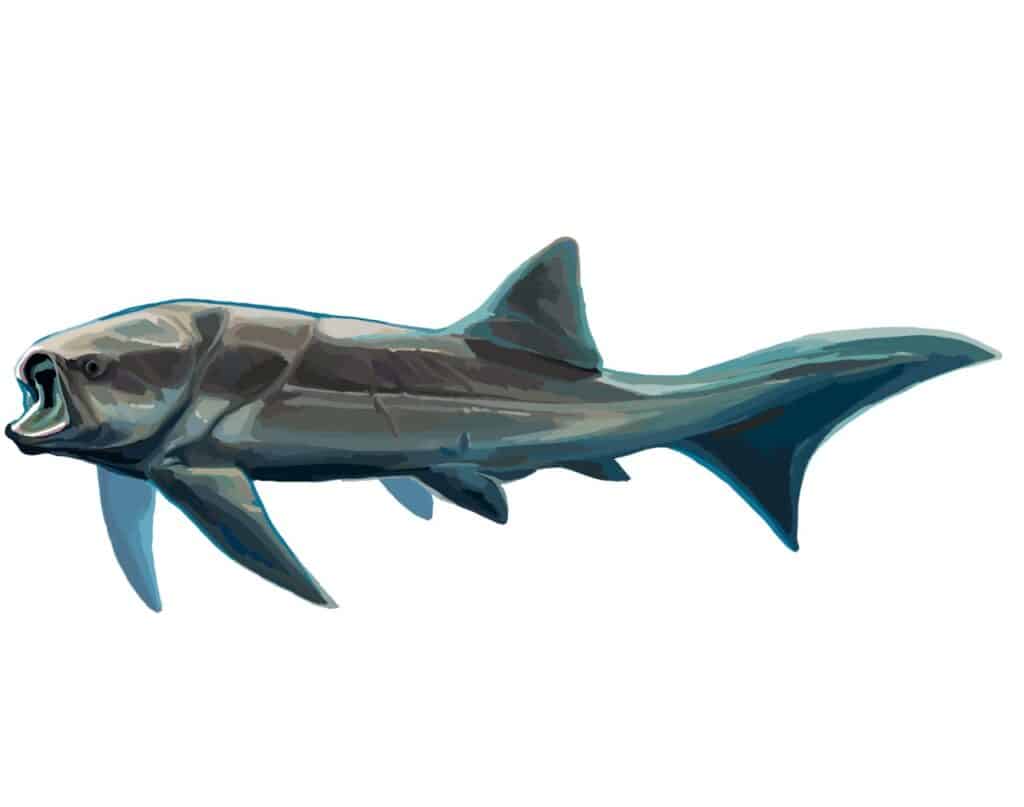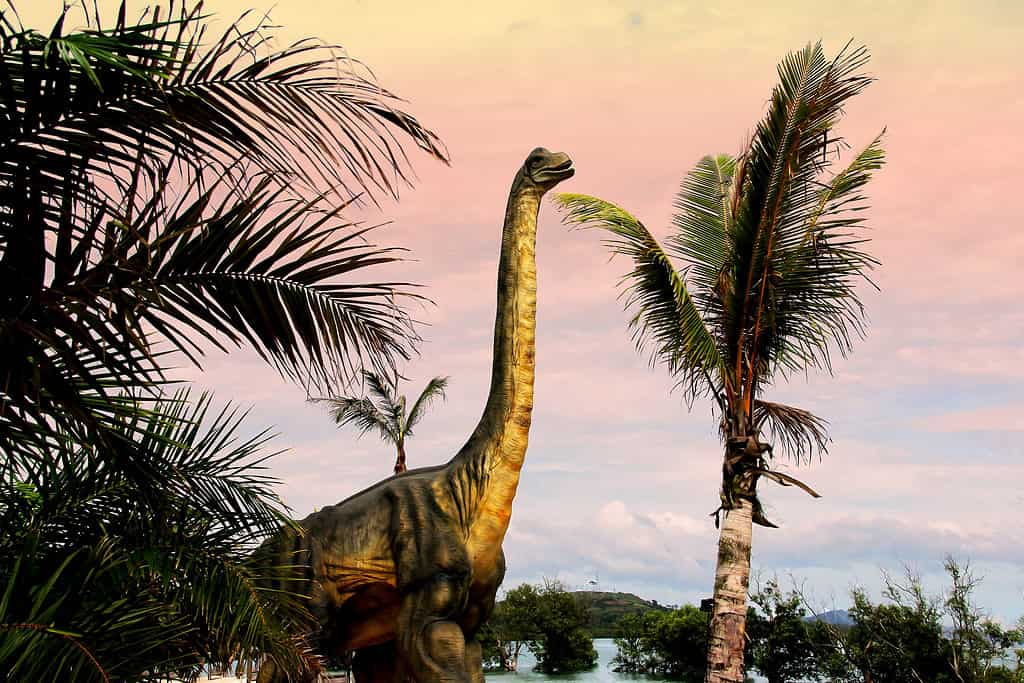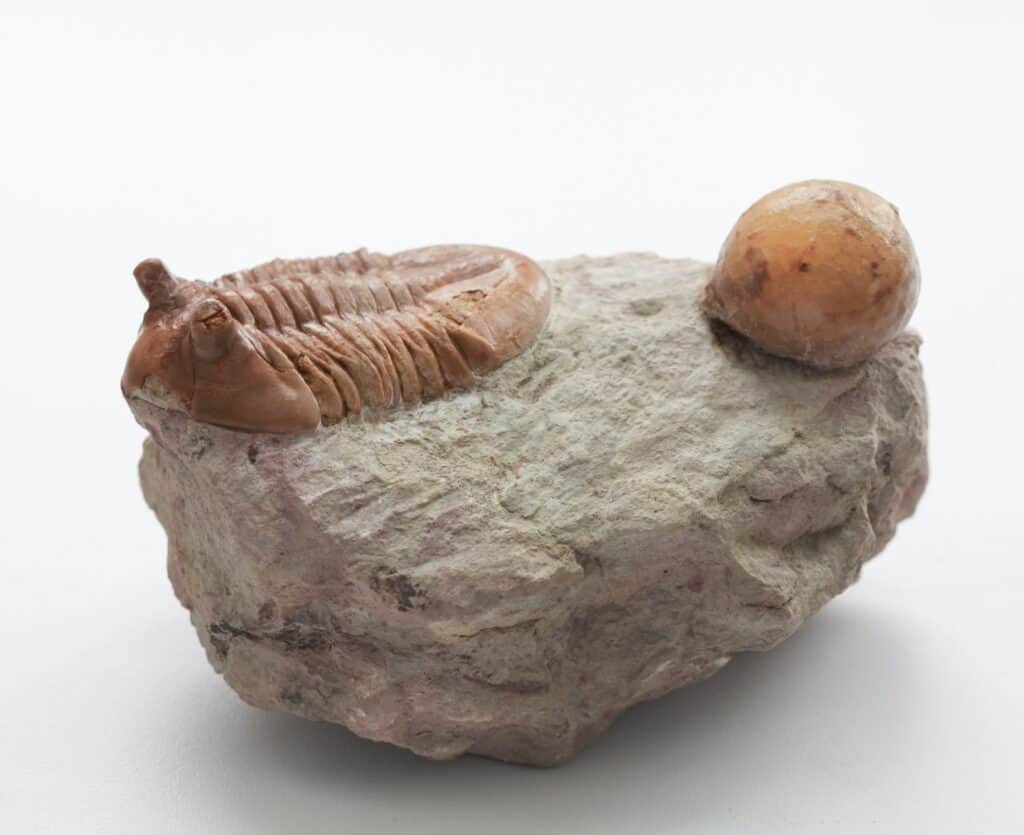Ohio’s fossil record starts in the Cambrian Period, as no Precambrian fossils have been found in the region so far. On top of that, in the Late Cambrian, Ohio was submerged and entirely covered by seawater.
During the Ordovician and the Early Silurian, the same living conditions applied, with some exceptional, short periods during which the region was dry land. As a result, the main inhabitants of Ohio were echinoderms, brachiopods, clams, trilobites, snails, and so on. By the Early Devonian, things had changed a bit, and only the eastern part of Ohio was still submerged.
Throughout its prehistory, Ohio has been characterized as being either submerged or swampy, marshy, sandy, muddy, and so on. The region rose above sea level only from 248 to 1.6 million years ago. As a result, rocks that could have contained fossils and thus been dinosaur proof were eroded.
What Makes Ohio Interesting in Terms of Fossils?

In 1965, roughly 50,000
fish
fossils were discovered at a construction site.
©Entelognathus / CC BY-SA 4.0 – License
In 1965, roughly 50,000 fish fossils were discovered at a construction site. This wasn’t, however, a random occurrence. It was almost a fully-fledged expedition organized by the Cleveland Museum of Natural History, the Highway Department, and Ohio’s Bureau of Public Roads. It was led by David Dunkle (a member of the Smithsonian).
Among the 50,000 fossils were remnants of some giant species – Titanichthys and Dunkleosteus. A couple of months and a lot of digging later, the same construction site was the source of over 120 unique species in the area. Out of those 120, about 60 were unknown to science until then.
On top of that, if we’re discussing interesting things, it’s worth mentioning that Isotelus became Ohio’s state fossil, thanks to two elementary school teachers and a bunch of students excited about paleontology and fossils. Doris Swabb (Beavertown School, Kettering) and Virginia Evers (St. Anthony School) took their students to the Boonshoft Museum of Discovery. Upon taking note of the Isotelus fossils, they thought it would be nice if it became the state’s official fossil.
Did Any Dinosaurs Live in Ohio?
Ohio doesn’t have any fossil records that could hint at the presence of dinosaurs in the area before their mass extinction. One reason for this is the fact that the region was above sea level even from 248 to 66 million years ago – namely the main timeline of most dinosaurs, but also from 66 to 1.6 million years ago, unlike other areas that would be covered in water or at least crossed by it.
This led to fossils eroding instead of being deposited as sediments on sea or lake beds. After the mentioned period, during the Quaternary, Ohio’s region was undergoing glacial activity – at the time, Cleveland was covered by a glacier that was a mile thick.
What Are Dinosaurs?

A dinosaur is an extinct animal with upright limbs that lived specifically on the land about 252 to 66 million years ago.
©thaloengsak/Shutterstock.com
It’s important to understand the fact that reptiles, amphibians, brachiopods, snails, and cephalopods (to name a few) were not dinosaurs. Even though some sources might refer to them like that, the definition of the dinosaur term says otherwise.
A dinosaur is an extinct animal with upright limbs that lived specifically on the land about 252 to 66 million years ago, during the Mesozoic Era. Naturally, there are exceptions to this rule; for instance, some early relatives of the crocodile had upright limbs.
However, if you want to ensure that the species you’re looking at is a dinosaur, you simply have to check if it’s a part of the Dinosauria clade under the Chordata phylum. Things can get complicated, still!
For example, one can identify two groups of dinosaurs – avian and non-avian. This is due to the fact that modern birds are now believed to be feathered dinosaurs. Most of them evolved from representatives of the Theropoda clade.
On the other hand, if we take a look at the famous Pterodactylus, we can notice that, while under the Chordata phylum, it is part of the Pterosauria order of winged lizards. A more coherent and logical explanation is the fact that these winged lizards didn’t have upright limbs. Instead, they had bony and membranous structures that functioned as wings. In short, the Pterodactylus was not a dinosaur.
What Fossils Have Been Uncovered in Ohio?

Ohio is famously known in the paleontological world for the presence of Ordovician fossils throughout the state.
©Fiery Phoenix/Shutterstock.com
Ohio is famously known in the paleontological world for the presence of Ordovician fossils throughout the state. In fact, the Cincinnati area has such a rich fossil record that a certain part of the Ordovician period is often referred to as the Cincinnatian.
The Ordovician period dates from 485.4 to 443.8 million years ago, roughly 200 million years before the first dinosaurs. Graptolites, trilobites, brachiopods, and cephalopods were the dominant species at the time; fish did not exist.
Then, the next period with a rich fossil record in Ohio is the Devonian, which spans from 419.2 to 358.9 million years ago. Unlike the Ordovician, the Devonian was dominated by fish. Dunkleosteus fossils were uncovered in Ohio. This brought joy to paleontologists as this is one of the largest fish of that period.
Can We Find Out What Dinosaurs Might Have Lived in Ohio?
While we’d love to tell you at least what dinosaurs might have lived in the prehistoric region of Ohio, it would be nothing but guesswork. This is because prehistoric times were more than just landmasses filled to the brim with dinosaurs, as depicted in movies.
For instance, prehistoric North America was divided into two land masses. They are Laramidia (the western part) and Appalachia (the eastern part, which also includes Ohio). These were separated by the Western Interior Seaway that eventually retreated during the Maastrichtian (72.1 to 66 million years ago, namely quite close to the Cretaceous-Paleogene extinction event).
Because of this separation, Appalachia didn’t develop a fauna as rich as that in Laramidia. While Laramidia was rich in pachycephalosaurs, hadrosaurids, ceratopsians, ankylosaurids, and even tyrannosaurs, Appalachia was subject to high sea levels, constant erosion, and an overall severe lack of orogenic sediment input.
The main result is that most of the dinosaur fossils found throughout Eastern North America are not local. Instead, they originate from carcasses carried by sea, possibly from Laramidia, that eventually ended up in modern Appalachia. Unfortunately, Ohio wasn’t lucky, as no dinosaur remains were brought into its area.
What Dinosaurs Lived in Prehistoric Eastern North America’s Appalachia?
According to research and fossil records, Appalachia was home to hadrosaurids, leptoceratopsians, nodosaurs, tyrannosaurids, ornithomimids, dromaeosaurs, ornithopods, maniraptors, sauropods, troodontids, and coelurosaurs, to name a few. Reportedly, these all inhabited the region from the Cenomanian to the Maastrichtian.
However, as mentioned, things aren’t clear, to say the least, especially when it comes to Ohio.
Keep in mind that dinosaurs roamed the Earth only for about 186 million years. This amounts to about 4% of the Earth’s timeline. Thus, making it completely logical why some areas are abundant in dinosaur fossils while others have none, such as Ohio.
As an interesting note, if you want to take a look at extant dinosaurs today, just look at the modern birds that cross the sky. In fact, the smallest dinosaur that still lives today is none other than the bee hummingbird. In contrast, the smallest dinosaur was a species about the same size as a bee hummingbird called Oculudentavis. It was slightly over 0.5 inches long. However, it was later confirmed that Oculudentavis was, in fact, a genus under the Reptilia class. As you can see, things can get pretty confusing when discussing dinosaurs!
Where to See Fossils Today in Ohio
In Ohio, fossils can be seen in four natural history museums – the Cincinnati Museum of Natural History & Science, the Cleveland Museum of Natural History, the Karl Limper Geology Museum of Oxford, and the Orton Geological Museum of Columbus. There’s also Trammel Fossil Park, which reportedly has free admission. It also allows visitors to keep whatever they find while fossil hunting.
On top of that, if you’re interested in paleontology, the State of Ohio provides a proper guide to fossil collecting. It also includes the locations of the six public fossil collecting sites in the state. You can visit, explore, and keep what you find (although not all sites allow that).
These are Fossil Park, Oakes Quarry Park, Hueston Woods State Park, Caesar Creek State Park, Trammel Fossil Park (mentioned above), and East Fork State Park. Some of these even allow visitors to bring shovels, chisels, and rock hammers with them. Just in case you’re more experienced with fossil hunting and want to give it your best!
The photo featured at the top of this post is © Esteban De Armas/Shutterstock.com
FAQs (Frequently Asked Questions)
Does Ohio have a lot of dinosaur fossils?
Ohio doesn’t have any fossil records that could hint at the presence of dinosaurs in the area before their mass extinction.
Where can you see fossils in Ohio?
In Ohio, fossils can be seen in four natural history museums – the Cincinnati Museum of Natural History & Science, the Cleveland Museum of Natural History, the Karl Limper Geology Museum of Oxford, and the Orton Geological Museum of Columbus.
Thank you for reading! Have some feedback for us? Contact the AZ Animals editorial team.






